Croatian Medical Chamber Pays Tribute to Vukovar's Sacrifice in Homeland War
ZAGREB, November 15, 2020 - A delegation of the Croatian Medical Chamber (HLK) on Sunday lit candles at a memorial at the Vukovar National Memorial Hospital in recognition of the hard work and great sacrifice of Vukovar doctors during the aggression on Vukovar in 1991.
"Like all these years, the Croatian Medical Chamber pays tribute to Vukovar's sacrifice and to victims of the Homeland War all over Croatia and expresses its thanks to colleagues who worked at the Vukovar hospital for three months in 1991 in inhumane conditions, offering medical help to all those who needed it," HLK president Kresimir Luetic said.
He said that HLK members had come to the Vukovar hospital a few days before November 18 and not on that day due to the epidemiological situation as they wanted to send a message to everyone else to listen to epidemiologists and not to gather in large numbers in Vukovar on November 18.
Luetic said that the sacrifice of Vukovar in the Homeland War can also be honoured on other days and in other places. According to him, Vukovar should not become a new COVID-19 hotspot following November 18 if epidemiological measures are adhered to.
Head of Vukovar hospital, Vesna Bosanac, also does not expect Vukovar to become a new coronavirus hotspot after November 18.
It is important that everyone who comes to Vukovar really adheres to the measures, that they wear masks and listen to the COVID-19 response team, and that there are no gatherings, Bosanac said.
The HLK delegation also visited the Homeland War Victims Memorial Cemetery, where it laid a wreath and lit candles.
Milanovic: It is People, not Political Elites that Make up Remembrance Procession
ZAGREB, Nov 14, 2020 - The President's Office issued a press release on Saturday ahead of the Remembrance Day commemoration in Vukovar on November 18, saying that it is people and not political elites that make up the Remembrance Procession.
President Zoran Milanovic is of the view that the commemoration of people killed in Vukovar and Skabrnja during the Homeland War "has true significance only if it is open to all citizens wishing to pay their respects and gratitude to those killed and gone missing, and not just to those selected and to the political elites. The Remembrance Procession in Vukovar is made up of people and not political elites," the press release said.
"In the present situation, due to the coronavirus pandemic, the arrival of a large number of people in Vukovar to join the procession may be dangerous to their health and cause further spread of the pandemic. Double standards, obviously politically motivated, which allow a gathering of a large number of people in Vukovar while banning such gatherings elsewhere in Croatia, are irresponsible both to Vukovar and to the citizens," it added.
"In this situation, the victims of Vukovar can and must be honored in a dignified manner, without political calculations, double standards and putting the health of citizens at risk. The President of the Republic will pay his respects to the victims of Vukovar in a manner befitting the situation," the President's Office said.
For the latest travel info, bookmark our main travel info article, which is updated daily.
Read the Croatian Travel Update in your language - now available in 24 languages.
Defence Minister Lays Wreath at Vukovar Memorial Cemetery
ZAGREB, October 31, 2020 - Defence Minister Mario Banozic on Saturday laid a wreath and lit a candle at the Homeland War Victims Memorial Cemetery in Vukovar on the occasion of All Saints' Day and All Souls' Day.
He also paid his respects to the victims at the Ovcara memorial and in Bogdanovci.
Banozic said it was with pride and dignity that he was paying his respects to the defenders and all those who gave their lives for free and democratic Croatia as well as to the suffering of Vukovar in the Homeland War.
"Vukovar meant everything for Croatia and today it is a symbol of the heroism and resistance in the Homeland War. We are paying deep respects to the victims of Vukovar as well as the victims of Bogdanovci who gave an immense contribution to the creation of peace and freedom in Croatia. In thought, we are with the families of the killed, missing and dead Croatian defenders. Once again, an immense thank-you for all you did," the minister said.
He was joined by War Veterans Minister Tomo Medved, representatives of the Interior Ministry, the army and Vukovar-Srijem County, and the last commander of Vukovar's defence, Branko Borkovic, the Defence Ministry said in a press release.
VIDEO + PHOTOS: Vukovar Tower Opens In Spectacular Ceremony
October 30, 2020 - Fireworks pierced the sky, music filled the air and a striking choreography of colours lit the Vukovar Tower at this evening's grand unveiling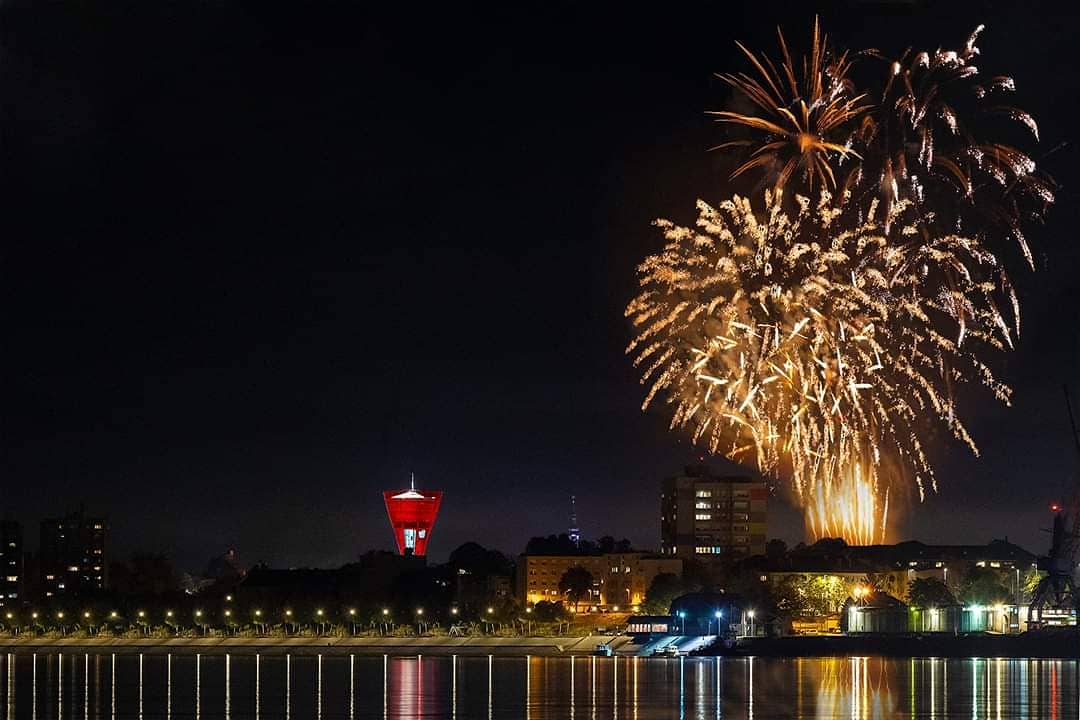
© Marko Džavić
Fireworks pierced the night sky, music filled the air and a striking choreography of colours lit the monument at this evening's official unveiling of the renovated Vukovar Tower. In a well-measured and memorable ceremony, the chill of the autumnal early evening was replaced with a myriad of heartfelt emotions.
One of the most recognised symbols of remembrance of Croatia's Homeland War, the Vukovar Tower has been under renovation for three years. Famously damaged in fighting during the war, its scars are a constant reminder of the heavy bombardment the town received. The Vukovar tower has undergone renovation needed to ensure its survival and to open up the structure to public visitation. Around 46 million kuna has been spent on the project, with much of the money coming from public donations.
Fireworks, as seen from spectators on the ground
Music at the opening ceremony ranged from solemn ballads delivered by Croatian pop stars, several all-male choirs and the traditional tamburaci folk music of Slavonia. The ceremony was broadcast live on the web pages of the City of Vukovar and on local TV channels.
The full hour-long ceremony
The Vukovar tower was built in 1968 and stands 50 metres high. It is difficult to judge its size from pictures, but at the time it was built, the structure was one of the largest water towers in Europe. In the times before the war, it held a restaurant with a panoramic view of the town and the surrounding Slavonian countryside. During the war, the Vukovar Tower was hit with more than 600 missiles. It thereafter became a symbol of resistance, then of remembrance.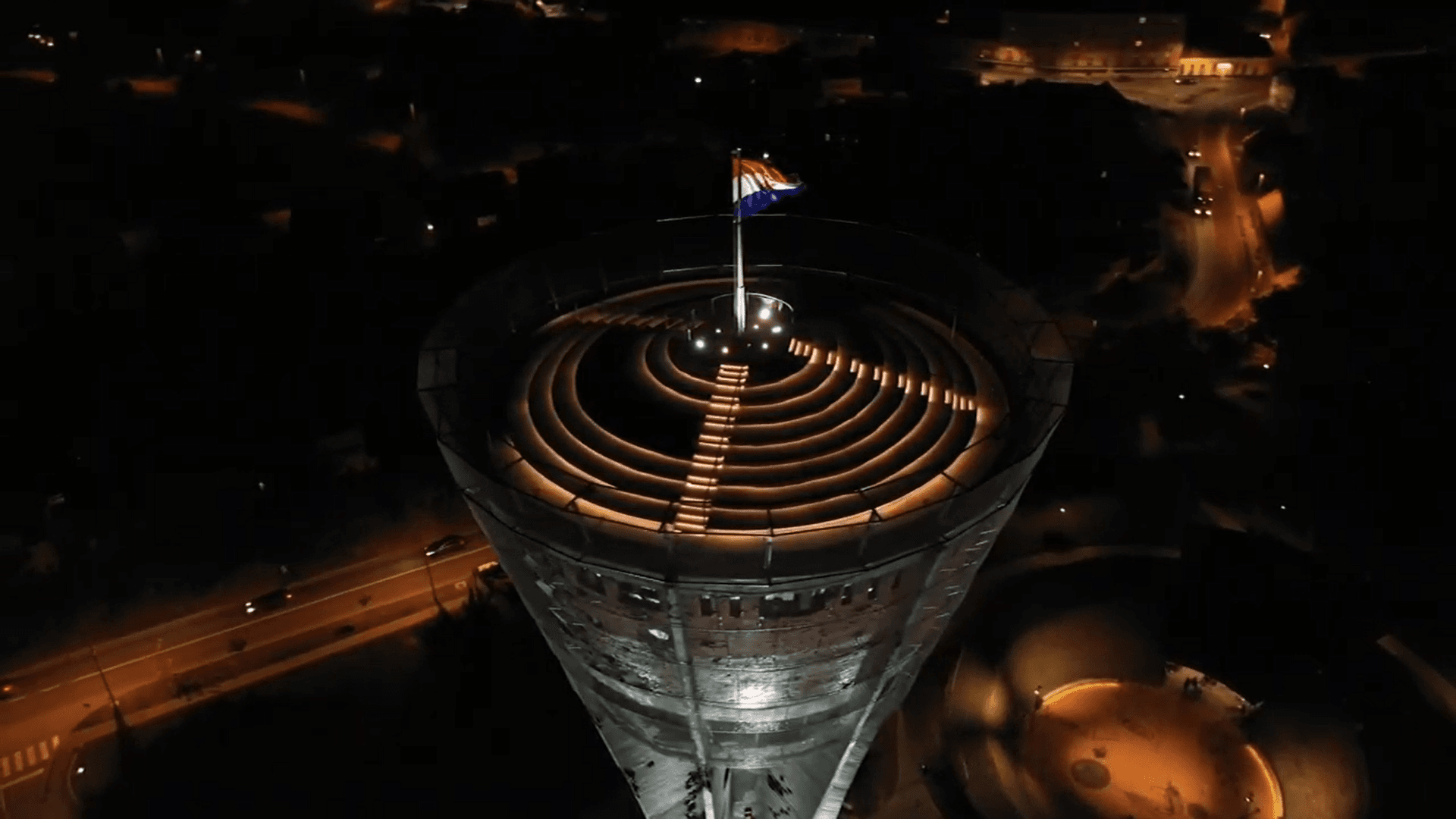
An integral part of the monument, the scars on the tower have been preserved in the renovation but shored up so that the Vukovar Tower can stand indefinitely. A new memorial space within the tower was presented as part of the unveiling. The monument will hereafter become part of Vukovar's most-visited buildings. Tens of thousands of Croatians visit Vukovar each year. Its art, culture and beautiful nature draw many, but large numbers also make the trip in remembrance of the war and the lives lost in the town. Almost every Croatian school year will make an organised trip to the town for this purpose.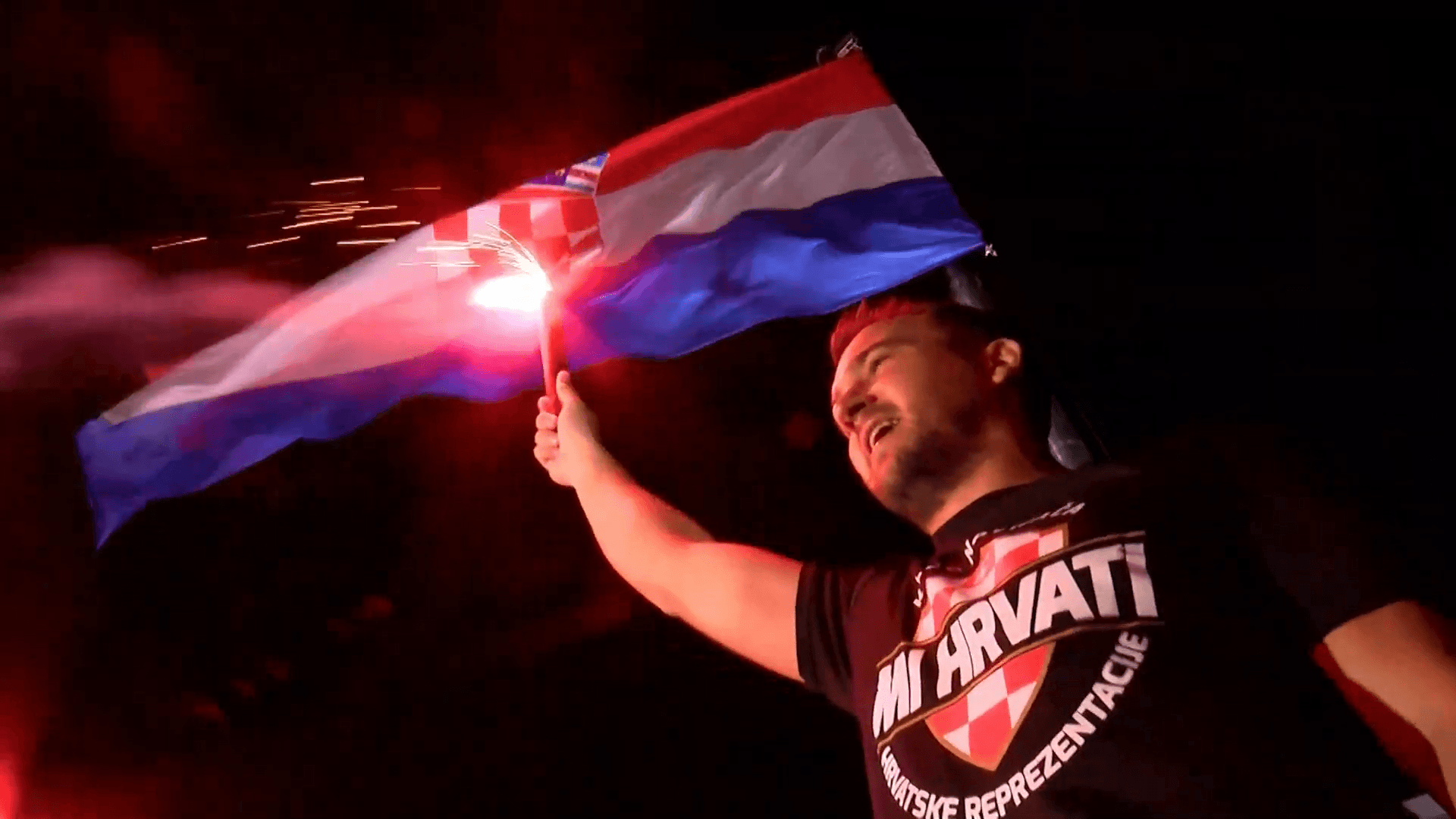 All uncredited photos © Grad Vukovar
All uncredited photos © Grad Vukovar
For the latest travel info, bookmark our main travel info article, which is updated daily.
Read the Croatian Travel Update in your language - now available in 24 languages
Book and Publishing Fair of Ethnic Minorities Opens in Vukovar
ZAGREB, October 17, 2020 - The second annual book and publishing fair of ethnic minorities in Vukovar-Srijem County opened in Vukovar on Saturday as part of Croatian Book Month.
The fair was organised by the Association of Ruthenians in Croatia, featuring the Bosniak, Hungarian, Ruthenian, Slovak, Serb, Albanian, German and Ukrainian minorities.
"The purpose of the fair is to present the publishing activities of the ethnic minorities and to show the Croatian public what they do, what they write and what they publish, given the fact that some people question what the money from the Council for National Minorities is spent on," the head of the Association of Ruthenians, Dubravka Rasljanin, said at the opening ceremony.
She said that this year the Council for National Minorities had provided the largest sum of money in the last five years, which would be spent on projects aimed at promoting the customs, religions, languages and scripts of the ethnic minorities and preserving their identities.
Continental Croatia Trains: Inland Opens Up With Green Travel
October 3, 2020 - With charter airlines in a state of flux and Croatia Railways beginning a renewal of their fleet in Slavonia, are continental Croatia trains the eco-friendly and best way to unlock the inland's amazing potential?
Everything changes. Nothing stays the same. Even before 2020 arrived, lifestyles and trends were headed in new directions. Eco-tourism and agro-tourism were two of the fastest-growing areas within the travel sector, this behaviour change a response to concerns about the environment. And nowhere in the country stands better poised to take advantage of this interest than continental Croatia.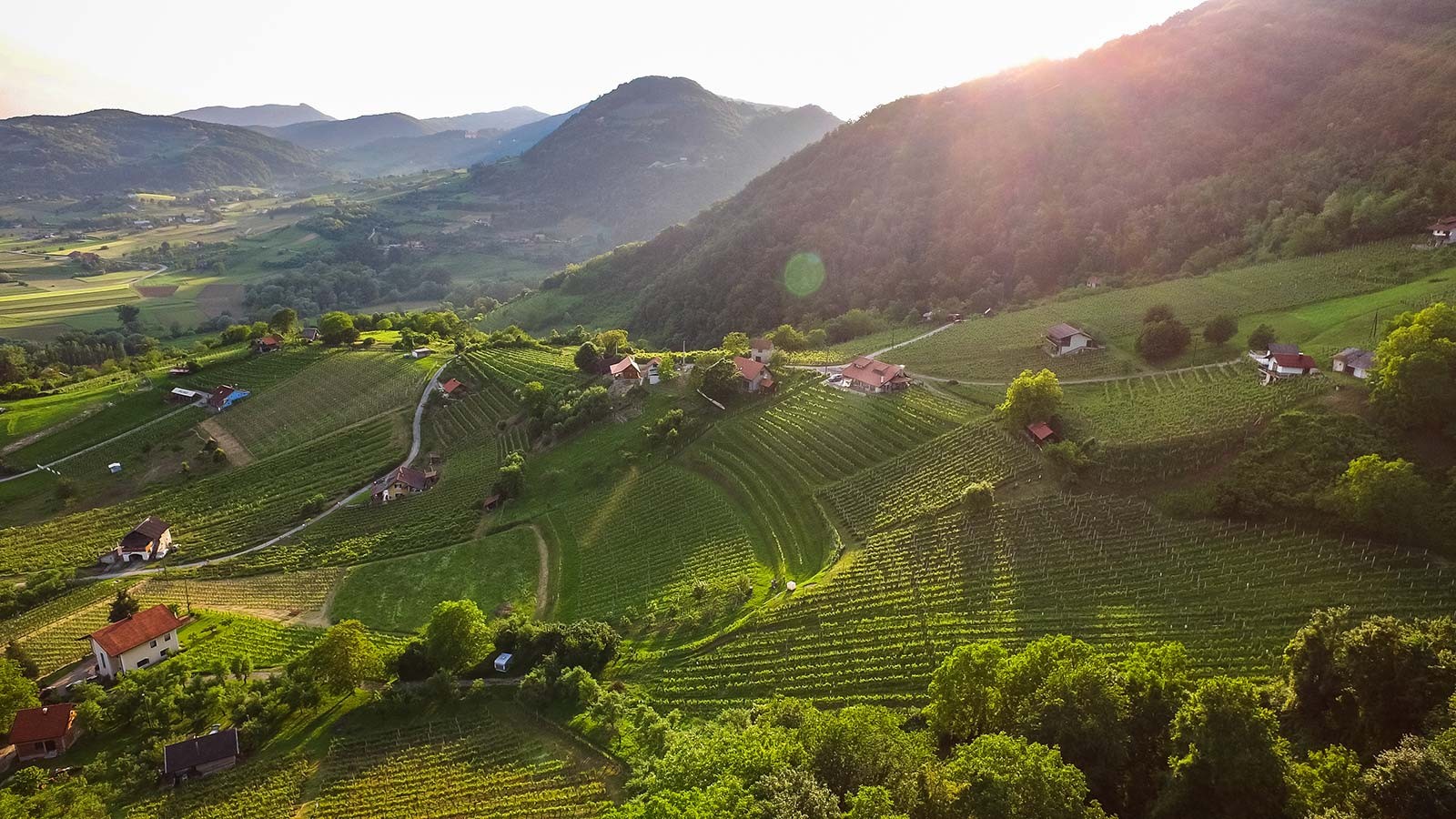 Impossibly pretty Zagorje - the region lies just north of Zagreb and is accessible by continental Croatia trains © Ivo Biocina / Croatia National Tourist Board
Impossibly pretty Zagorje - the region lies just north of Zagreb and is accessible by continental Croatia trains © Ivo Biocina / Croatia National Tourist Board
From the impossibly pretty hills of Zagorje, the peaceful rivers of Karlovac county and the hidden vineyards that surround the capital Zagreb to the vast Pannonian flatlands that stretch to Slavonia, Baranya, Vukovar-Srijem and beyond, the varied topography of continental Croatia is wild, exciting and - by many - wholly undiscovered.
This is land where agriculture and nature thrive side by side, where the stresses of modern-day existence ebb away as you readjust to a way of life that would look mostly familiar to the people who lived here centuries ago. These are places where you can truly be at one with yourself and with your surroundings. In continental Croatia, you often find yourself in an environment that is both timeless and traditional, yet wholly contemporary in regards to its ecological aspirations. And you're never far away from an exciting city environment that you can dip into on a whim – not just Zagreb, but Osijek, Slavonski Brod, Karlovac, Sisak and Varaždin too.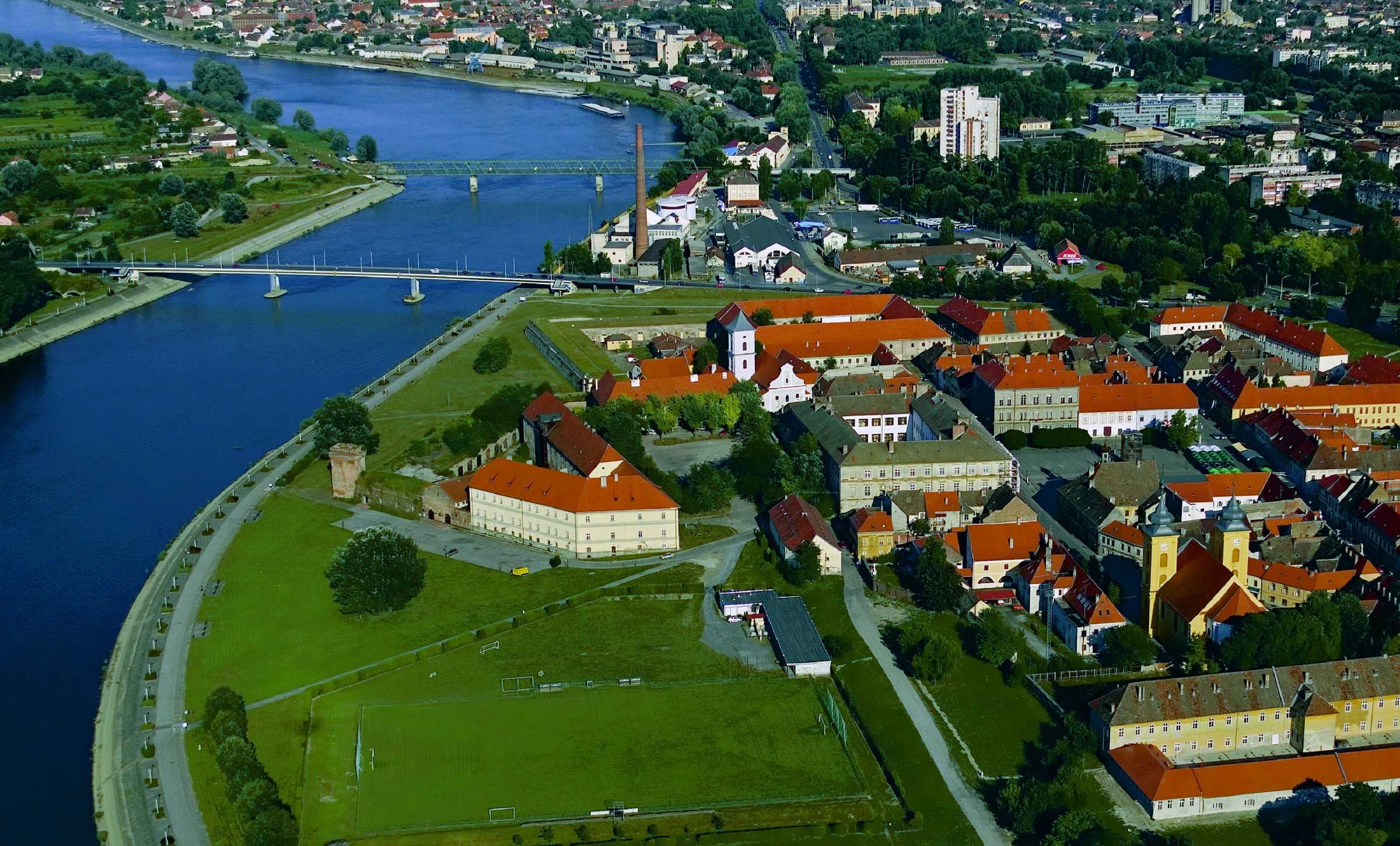 To those who really know and love Croatia, Osijek is simply unmissable. It is both the capital of and the doorway to Slavonia and Baranya and should be more accessible by continental Croatia trains. Sadly, international transportation links to the city by air are also quite poor. Improvements in accessibility to Slavonia and Baranya by rail and road are imminent © Romulić & Stojčić
To those who really know and love Croatia, Osijek is simply unmissable. It is both the capital of and the doorway to Slavonia and Baranya and should be more accessible by continental Croatia trains. Sadly, international transportation links to the city by air are also quite poor. Improvements in accessibility to Slavonia and Baranya by rail and road are imminent © Romulić & Stojčić
Unlocking the incredible potential of continental Croatia relies on getting the message out there and facilitating travel to these regions
In recent TCN features we have detailed that motorways within Croatia are among the best in Europe - once you're inside Croatia, travelling by car (or bus) between the regions couldn't be easier. We have also seen evidence of the huge interest in travelling here by rail and using continental Croatia trains.
Of all the modern methods of long-distance travel, rail is by far the most eco-friendly. What better way to begin an environmentally friendly holiday than by arriving on continental Croatia trains? When the country wisely decided to prioritise its internal motorway system, a modern and fast inter-regional rail network was put on the back burner. Nowhere suffers greater from this decision than continental Croatia.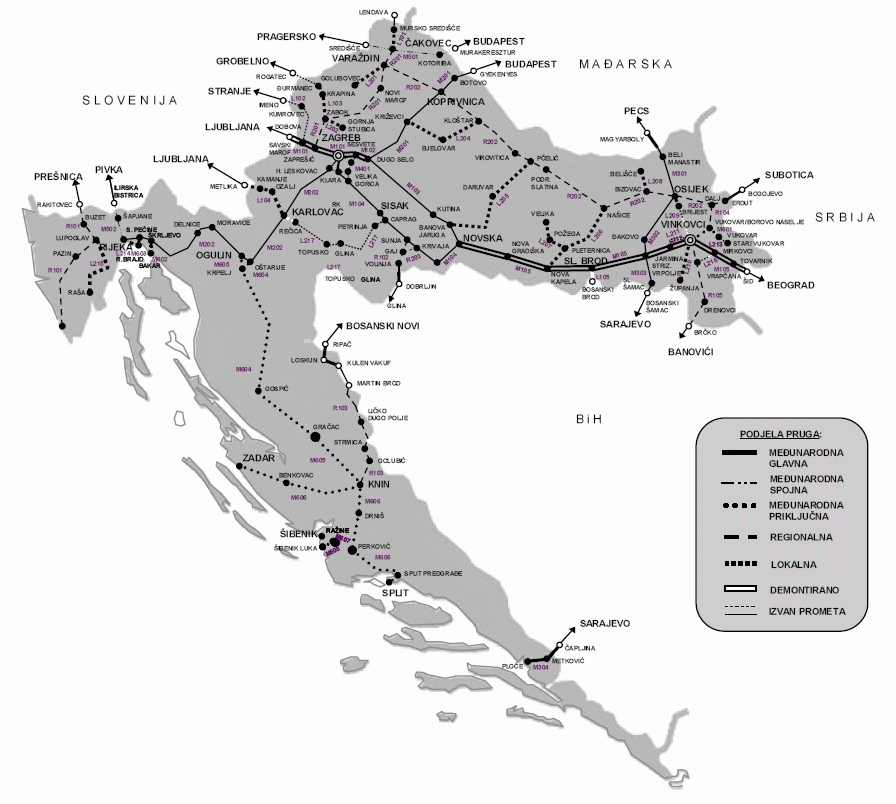 The Croatian rail network © Croatian Official Document uploaded to Wikipedia by Epepe
The Croatian rail network © Croatian Official Document uploaded to Wikipedia by Epepe
The only high-speed line that currently exists in Croatia links Rijeka to Budapest, via Zagreb and Koprivnica. Planned improvements hope to cut journey times between Zagreb and its nearest coastal city to an hour. Same as it ever was - Rijeka was the first Croatian city to be connected internationally by rail. That line also ran into the heart of Austro-Hungary and facilitated upper-class travel to places like Opatija. But does it best benefit the country to invest in more links to the coast or in continental Croatia trains? Well, the inland is not being ignored. Upgrades are being made to continental Croatia trains. This impressive beast actually services the country's coast. But would more investment in the continental Croatia trains network better service more people and help unlock the inland to tourists? Around 70% of the country's inhabitants live in continental Croatia © HŽPP
This impressive beast actually services the country's coast. But would more investment in the continental Croatia trains network better service more people and help unlock the inland to tourists? Around 70% of the country's inhabitants live in continental Croatia © HŽPP
The rail link between Zagreb and Slavonski Brod is so historic that it was once part of the four routes of the Orient Express. It has been maintained to a standard where you can make a relatively quick journey from the capital to Vinkovci via Slavonski Brod. The same cannot be said for rail travel to Osijek, the access point to Baranya and much more. So slow is the connection between Osijek and Zagreb that it has been possible over recent times to reach the Slavonian capital quicker by taking the train to Vinkovci, then the bus to Osijek, rather than travelling direct by rail. Osijek train station. A renovation to the building is planned for the near future © Romulić & Stojčić
Osijek train station. A renovation to the building is planned for the near future © Romulić & Stojčić
However, in February this year, Croatian Railways introduced four direct daily lines between Slavonski Brod and Osijek. And there will be a new tilting train line that will run between Zagreb to Osijek on Friday afternoon and from Osijek to Zagreb on Sunday afternoon, facilitating student travel. On October 15, the first low-floor train will run between Osijek and Vinkovci as an additional part of the renewal of their continental Croatia trains fleet in Slavonia. The welcome return of Croatia's second-oldest international rail line - linking Osijek to Pécs in Hungary, via Beli Manastir and Baranya - was introduced in late 2018.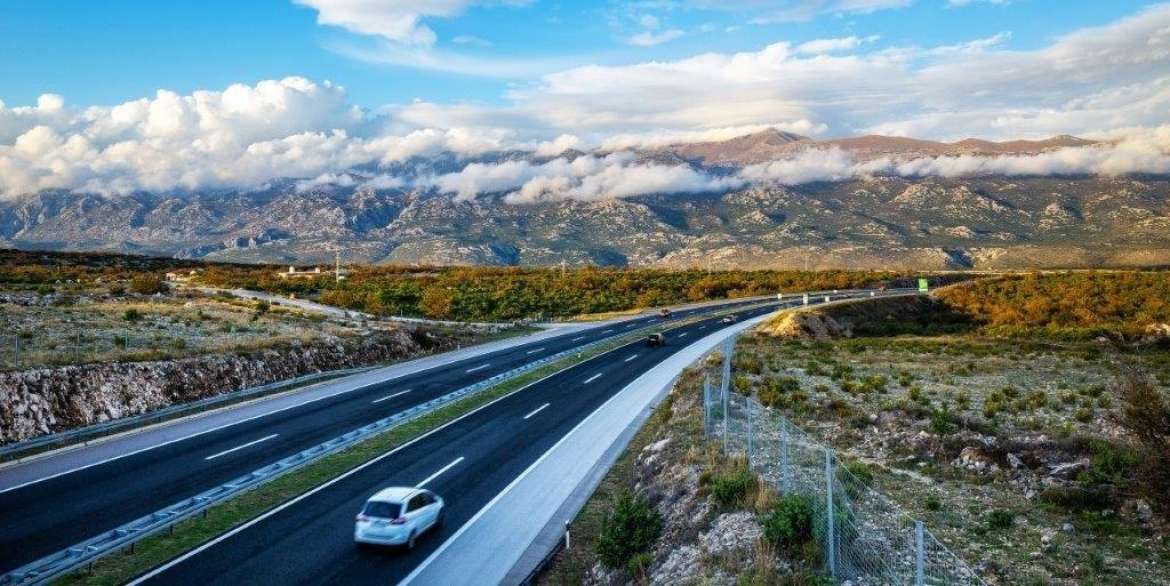 A motorway stretch between Metković and Dubrovnik, integrating the Pelješac bridge and the Croatian segment of the European corridor are the final big remaining projects in a three-decade-long undertaking to give Croatia one of the best motorway networks in Europe. Should Croatia's rail network be next? © Hrvatske Autoceste
A motorway stretch between Metković and Dubrovnik, integrating the Pelješac bridge and the Croatian segment of the European corridor are the final big remaining projects in a three-decade-long undertaking to give Croatia one of the best motorway networks in Europe. Should Croatia's rail network be next? © Hrvatske Autoceste
Access to Slavonia and Baranya will also be massively facilitated upon completion of the European corridor, which will connect North Europe to the Adriatic. Starting in Budapest, it necessitates the building of a bridge near Beli Manastir. Thereafter the motorway will pass by Osijek, connect to the Zagreb-Slavonia motorway near Lipovac, then pass through Bosnia and its capital Sarajevo and on to Ploče.
The removal of budget airline flights to the airport in Osijek remains a hindrance to attracting many international visitors to Slavonia and Baranya. However, with charter airlines facing the greatest uncertainty of all modes of transport at the current time, though their return is a must, it is perhaps now an ambition that should remain more long term. For the immediate future, improvements to rail travel look to be a brilliant way of opening up not only Slavonia, Baranya and Vukovar-Srijem, but also an eco-friendly access point capable of serving the whole of untapped continental Croatia.
For the latest travel info, bookmark our main travel info article, which is updated daily.
Read the Croatian Travel Update in your language - now available in 24 languages
Vukovar Student Becomes Croatia's First Animal Rights Lawyer
October 2, 2020 - Ivana Kramer from Vukovar became Croatia's first animal rights lawyer after graduating from the Faculty Of Law in Osijek
Ivana Kramer from Vukovar has become Croatia's first animal rights lawyer. She did so after graduating from the Faculty Of Law in Osijek, having received her diploma on September 23. The Faculty Of Law in Osijek is the only one in Croatia that has an elective course in animal rights.
In a recent interview with Vecernji List's Suzana Lepan Štefančić, Ivana explained that her desire to become Croatia's first animal rights lawyer stemmed from always having been around animals. “I have three dogs,” she said, in explaining her choice of the elective course in animal rights, “and my mother Željka adopts and helps abandoned animals.”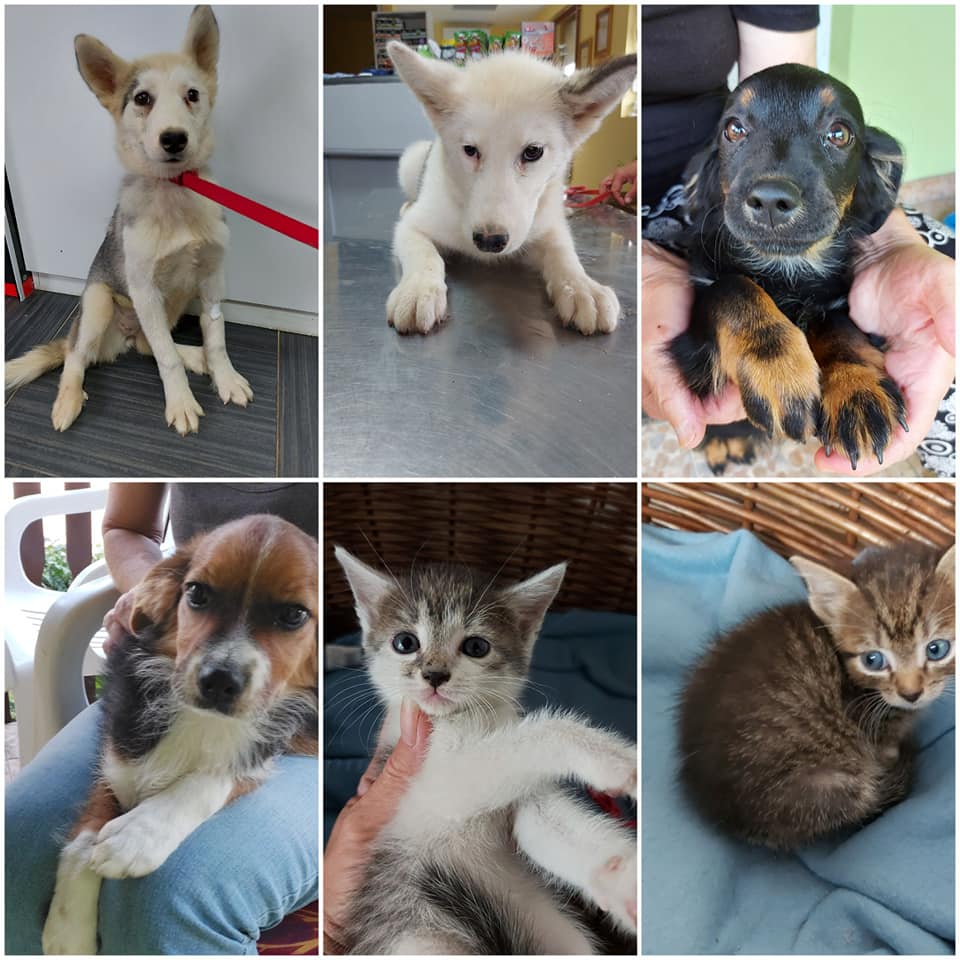
Some of the animals that Ivana's mum Željka looks after in Vukovar. Photos from the Facebook of Željka Kramer.
Ivana commuted to the Faculty Of Law in Osijek for five years in order to complete the course, choosing to stay living at home in Vukovar rather than move to the Slavonian capital. She says she would ideally like to stay in Vukovar to begin working in this field of law.
Her elective course in animal rights was undertaken in the final year of her studies and was the step that propelled her to the status of Croatia's first animal rights lawyer. During this final year, she researched the Animal Protection Act, which was implemented in 2017, with an emphasis on the situation in the Osijek-Baranja and Vukovar-Srijem counties. Her research included dog shelters in Vukovar and Osijek, where she occasionally volunteers.
For the latest travel info, bookmark our main travel info article, which is updated daily.
Read the Croatian Travel Update in your language - now available in 24 languages
Emotive New Vukovar Father And Son Monument Unveiled
September 22, 2020 – Their lives taken in the Homeland War, Petar and Igor Kačić are depicted in the new Vukovar Father and Son monument. Igor was just 16-years-old at the time he was killed
During recent days, family members, the town mayor and veterans representatives attended the unveiling of a new Vukovar Father and Son monument. The statue is the work of Zvonimir Orčić and Josip Cvrtila and was commissioned in remembrance of Petar Kačić and his son Igor. Aged just 16-years-old at the time of his execution, Igor is the youngest victim of the massacre at Vukovar.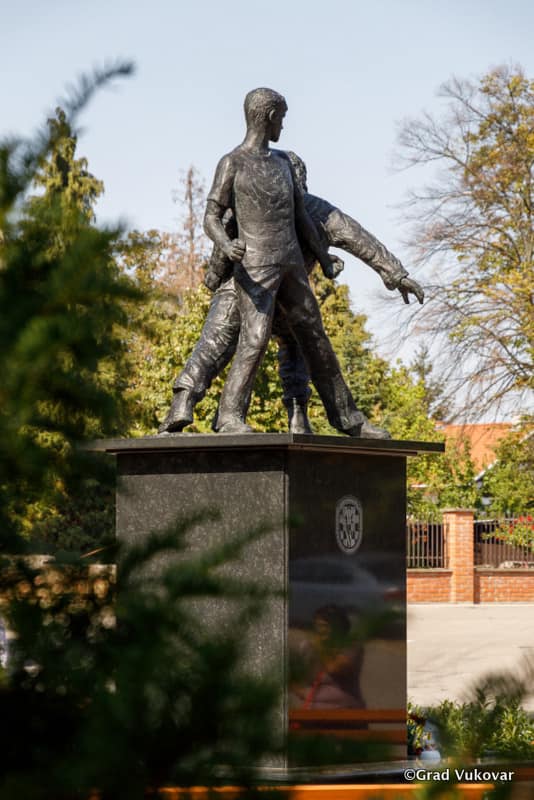
Petar Kačić was killed on the front line of the fighting in Vukovar on 2nd October 1991. He and other town residents were trying to defend their families and neighbours from the approaching Yugoslavian National Army forces. They were hopelessly outnumbered and inadequately armed for the task. They faced one of Europe's then-largest and best-equipped armies, whose numbers were bolstered by savage and ruthless paramilitaries.
Although the new Vukovar Father and Son monument shows the two males of the family together in defence of the town, Igor was actually killed one month after his father's passing, on 20 November 1991. While still grieving for Petar, the family had been moved into a shelter at Vukovar hospital to escape the intense shelling that rained down on the town each day. It had already destroyed their home two months previously.
Following the fall of the town, all refugees from the fighting were taken into the custody of the Yugoslavian National Army and their paramilitary accomplices. In a barbaric act that was to be repeated time and time again during the violent break up of Yugoslavia, the men were separated from the women, and small children, and then taken away.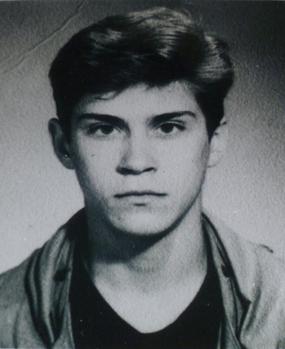 Igor Kačić, aged 16
Igor Kačić, aged 16
Although only 16-years-old, Igor Kačić was a strong and muscular boy. The look on his face was perhaps nearer that of a man, aged by grief, relentless shelling and the new responsibilities he had taken upon himself. After his father had been killed, Igor assumed the role of the family protector and stood on watch at the hospital while his mother Irena and his two sisters slept inside.
Around 300 men were taken from the Vukovar Hospital. Their number contained not only wounded fighters but sheltering civilians like Igor. They were transported by the Yugoslavian National Army to a farm in a hamlet called Ovčara, south-west of Vukovar. The army drove away, leaving the prisoners in the custody of the Serbian paramilitaries. 260 prisoners were lined up in groups, then shot. The bodies of 200 were later found in one mass grave.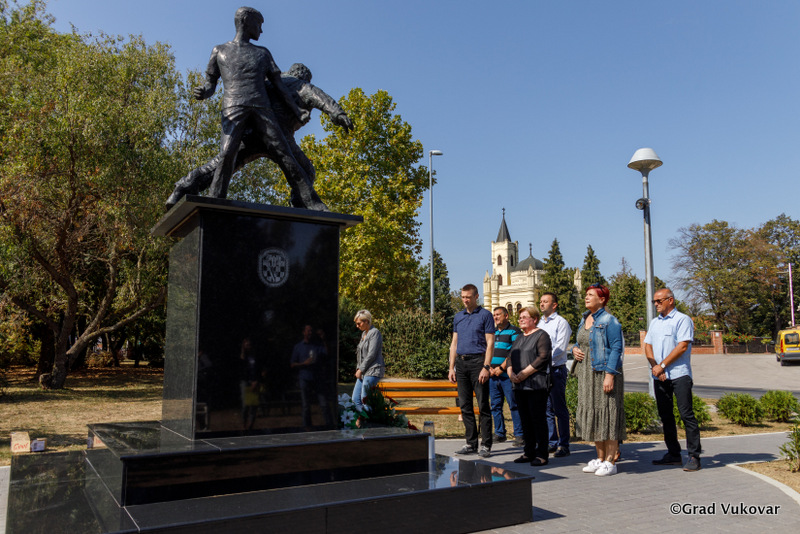
“It is not just a monument to Petar and Igor, it is a monument to all fathers and sons who gave their lives in the Homeland War,” said Igor's mother, Irena Kačić, at the statue's unveiling. Aged 69 years old, Irena Kačić had made the journey from her present-day home in Rijeka to attend the ceremony for the new Vukovar Father and Son monument.
All photos © Grad Vukovar / public domain
For the latest travel info, bookmark our main travel info article, which is updated daily.
Read the Croatian Travel Update in your language - now available in 24 languages
PHOTOS: Vukovar Water Tower Lights Up The Night Sky Over Eastern Slavonia
September 13, 2020 – The famous landmark is now visible out of daylight hours as a flood of colours sees the Vukovar water tower light up the night sky
With the recent completion of the VukovArt street art event 2020, you might have thought Vukovar would be retiring from the limelight for a while. Think again.
Over recent days, the Vukovar water tower has lit up the night sky over eastern Slavonia in a range of colours. The Vukovar water tower is one of the most recognisable landmarks in the town.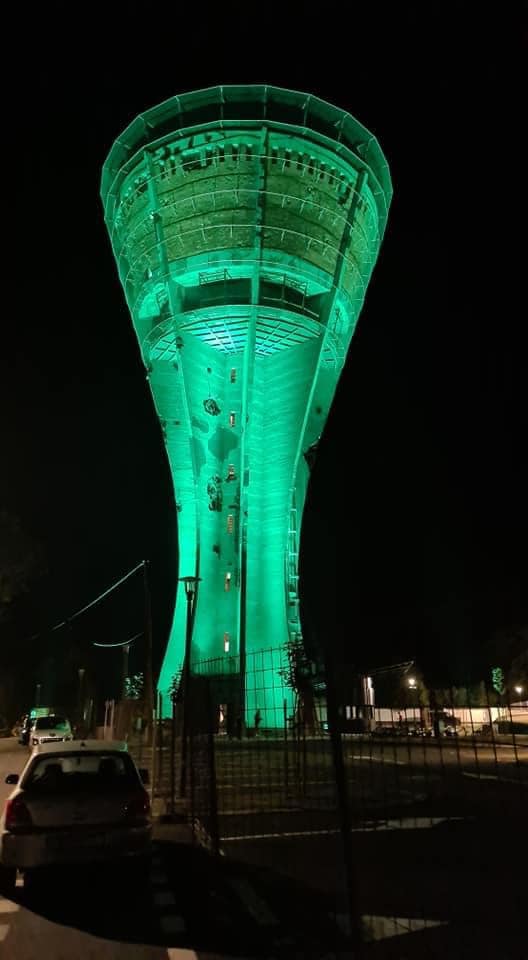
The multicoloured display heralds the opening up of the tower for visits. Famously damaged in fighting during the war, its scars are a constant reminder of the heavy bombardment the town received. The tower has been undergoing work in order that the structure can survive. The reconstruction and renovation has taken place over two stages. Around 37 million kuna has been spent on the project, with half of the money coming from donations, the other half from the Croatian government.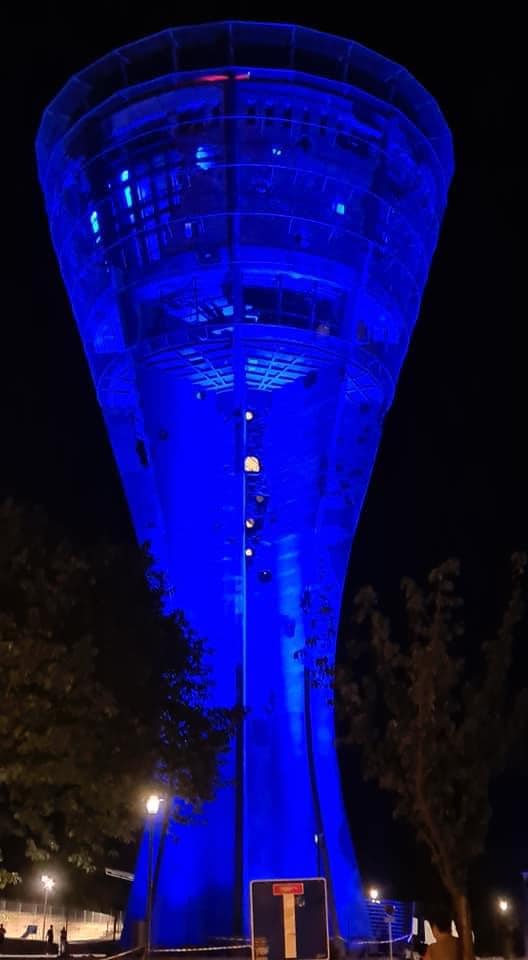
The water tower was built in 1968, stands 50 metres high and has a capacity of 2,200 cubic metres. At the time it was constructed, it was one of the largest water towers in Europe. In the times before the war, it also had a restaurant and offered visitors an incredible view over the town and Vukovar-Srijem County. During the war, it was hit with more than 600 missiles. It thereafter became a symbol of resistance, then of remembrance.
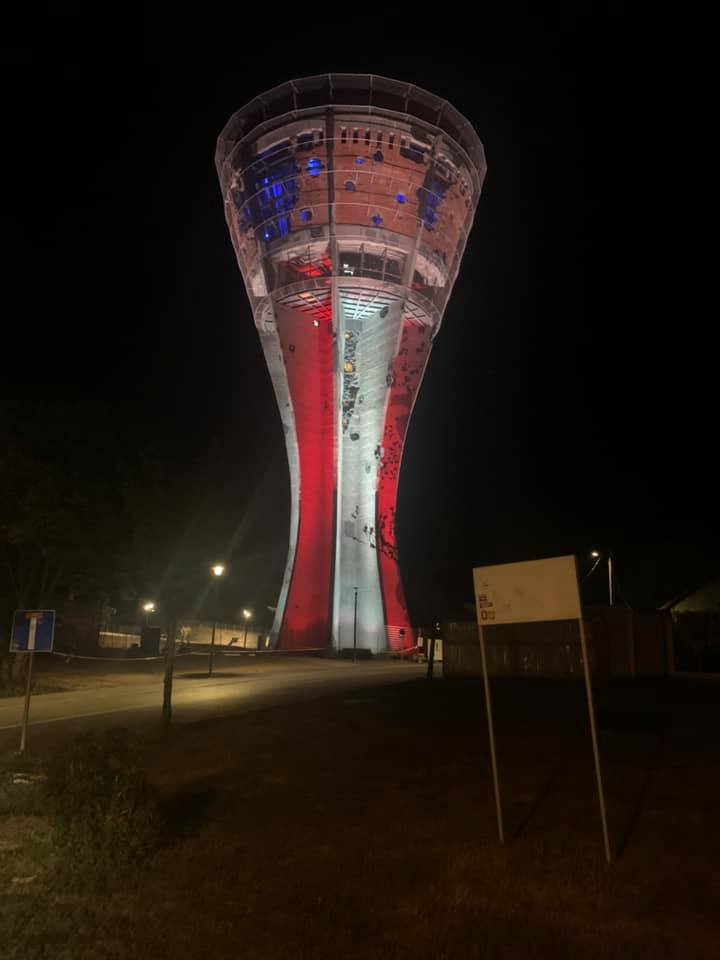
© Grad Vukovar
The town Mayor, Ivan Penava, announced that the Vukovar water tower will be open to general visitors at the end of October. Between now and then, the interior will be decorated, and a memorial room completed. Children from all over Croatia each year visit the town and the Vukovar water tower on organised school trips.
For the latest travel info, bookmark our main travel info article, which is updated daily.
Read the Croatian Travel Update in your language - now available in 24 languages
PHOTOS: Five Amazing New Murals Vukovar Street Art 2020
Sunday, 6 September 2020 – The Vukovar street art 2020 event VukovArt has just finished. Here are the five fantastic new works its left in the colourful Slavonian town.
The paints have dried, the scaffolding has been removed and all but the last few organisers have set off home. But, though VukovArt, the annual Vukovar street art 2020 has finished, the paintings from this year will remain.
These wonderful new works join a spectacular series of paintings which decorate the town, thanks to previous editions of VukovArt (you can check them ALL out on this link). Residents of the town now live their everyday lives among these incredible pieces of public art.
Here's a look at the Vukovar street art 2020 collection and a little from some of the artists who've made them.
OKO (Croatia)
Because he’s Mister Strength, Courage and Health
Human bodies, dressed in Victorian finery, topped with the heads of animals and, especially, birds; OKO's intricate and sometimes sinister designs have been seen at Zagreb’s Museum of Contemporary Art, Victoria and Albert Museum in London, the European Parliament in Brussels and in more proletarian spaces such as Zagreb’s Medika club and Theatre &TD. Her murals are often similar, only produced on an industrial scale.
"I chose to paint a bear because this animal often symbolises amazing strength and endurance," OKO told TCN. "When they invited me to paint in Vukovar it seemed like best possible symbolism for a city that endured so much and yet which still stands strong.
Boogie (Germany / Switzerland)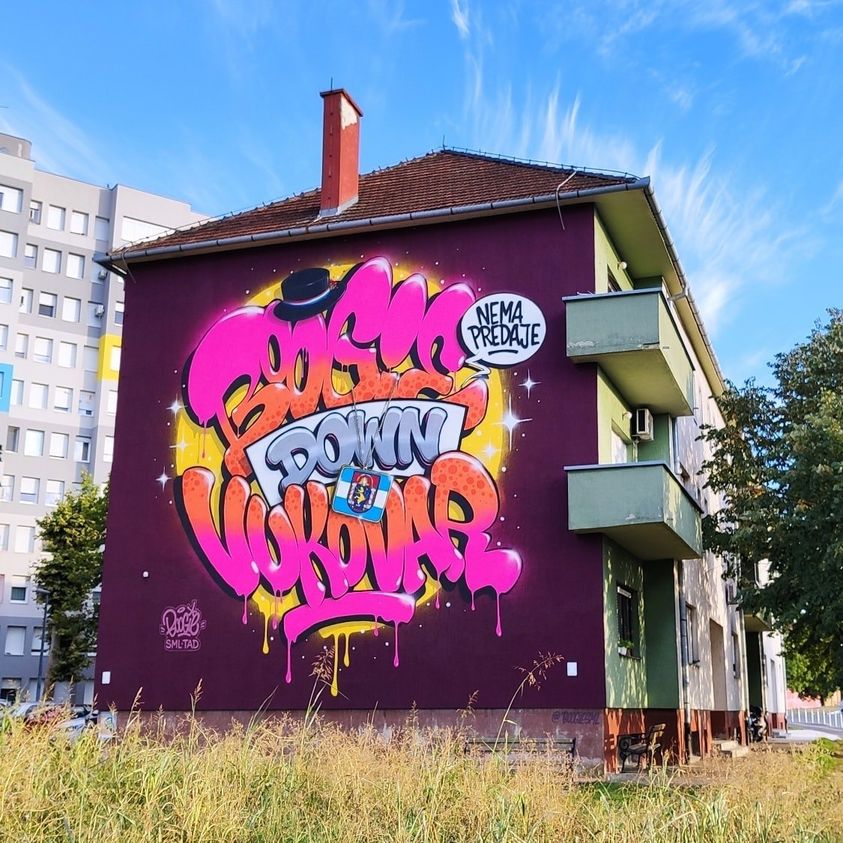
Boogie down Vukovar
Some 20 years ago, Boogie aka André Morgner formed the SML Crew in a region of eastern Germany not far from the Czech border. They've been active ever since, although Morgner himself moved to Switzerland. There, he's a now full-time artist, drawing his murals on walls of buildings, parks and offices, on commission for people like Google, Burton Snowboards and BMW. His pieces are vivid and contemporary in colour, but often take inspiration from the bragging tag work of vintage hip hop.
Tea Jurišić (Croatia)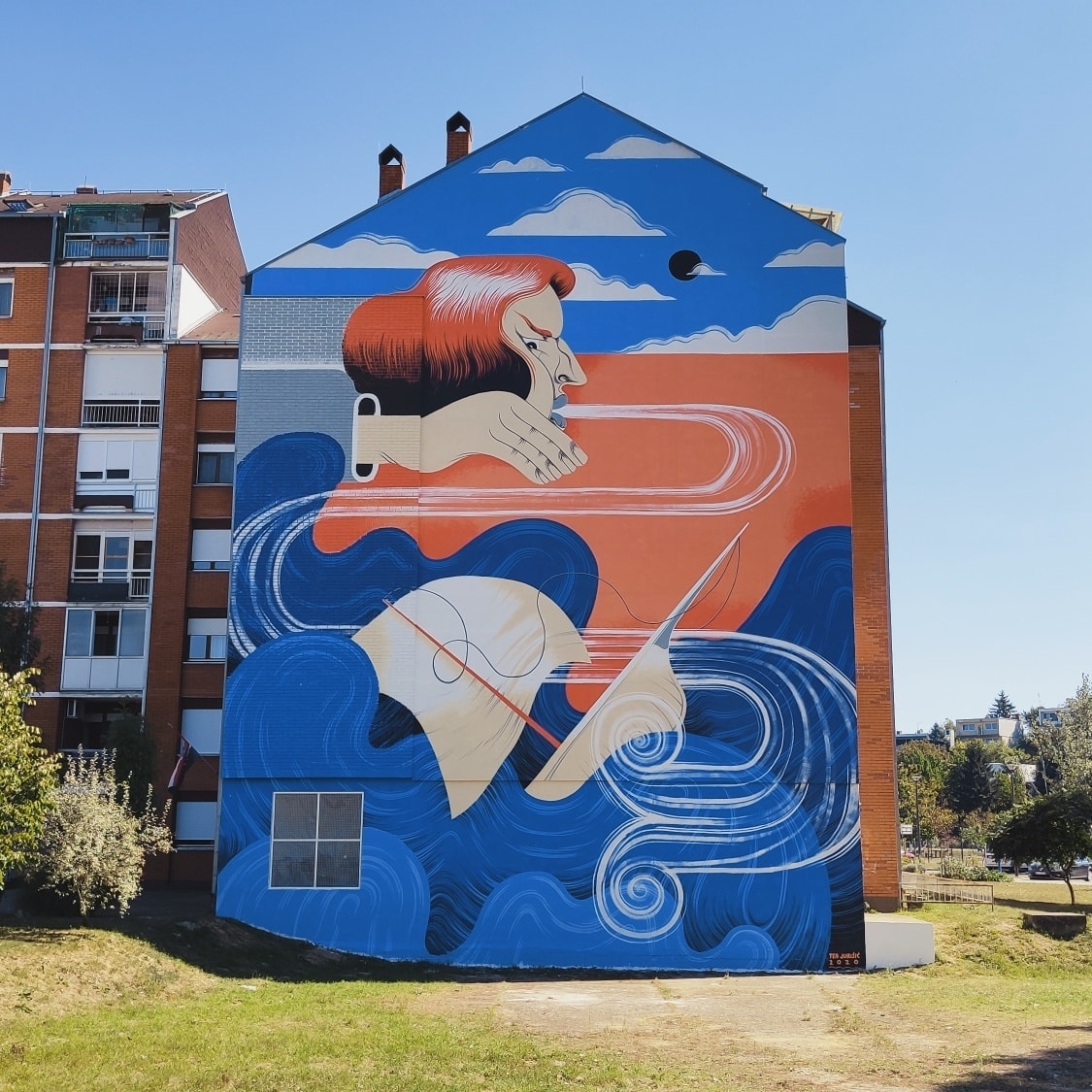
Bora
Having worked in many different modes of visual art, Tea Jurišić is, to many, known more for her drawings, paintings and illustrations than she is her street art. Yet, she has created various murals in Croatia, Slovenia, Italy and Norway. Since 2017 she has had 8 solo exhibitions in Croatia and overseas. She uses comedy and surrealism to add a playful edge to her simple storytelling.
"My challenge was a 300 square metre wall in the Olajnica neighbourhood, which I was painting between the 28th of August and the 3rd of September," said Tea. "The mural's name is Bora. It's the name of a fiercely strong wind that sometimes visits the coast of Croatia. I chose the name as I was trying to connect thematically two Croatian waters - the continental Danube river and the Adriatic sea. I relied on fresh colours that would bring a touch of summer to the gloomy days of winter that lie ahead. I tried to adapt the colours to the building, and the environment around the building. My experience in Vukovar was wonderful - from friendly people, a beautiful city and delicious food. It was an experience to remember for a lifetime."
Eugen Varzić (Croatia)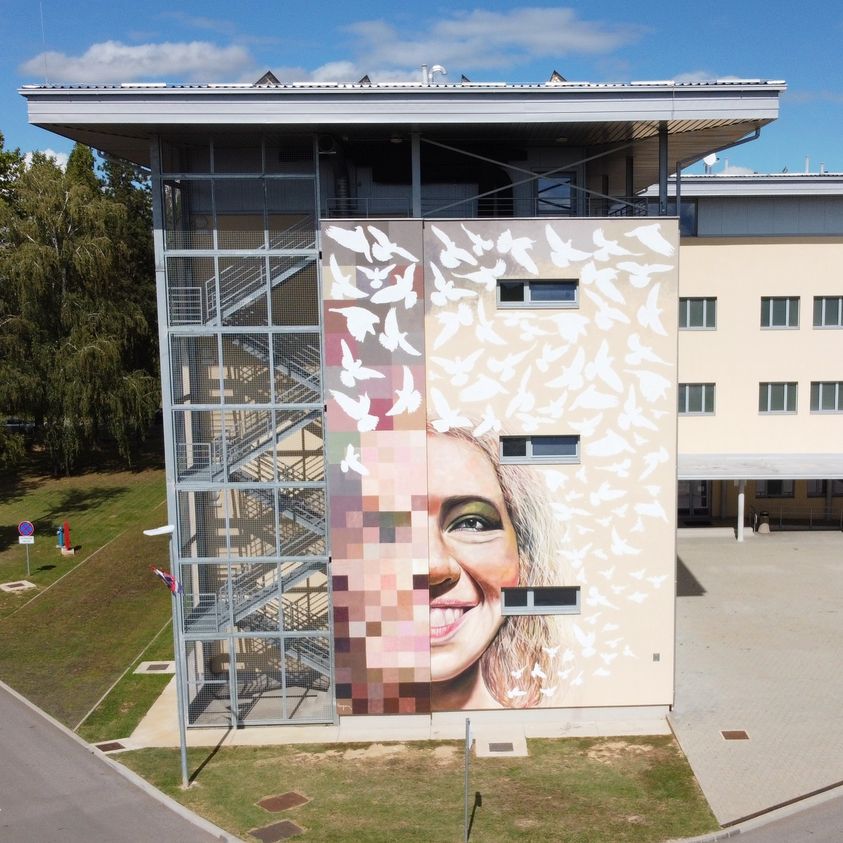
Future Freedom
A graduate of the Academy of Applied Arts in Rijeka, Eugen Varzić is something of a classicist operating inside wholly modern mediums. His paintings adorn city streets in Madrid, churches and the streets of his native Istria where, in Poreč, you'll also find his two mosaic sculptures, Trosjed and Konfin.
"This piece was a challange for me, because of the size, the positioning and the motif," Eugen said of his piece of Vukovar street art 2020. "The whole place used to be a military camp. After the fighting finished, they turned it into a memorial centre for the war, a kind of museum where you can see the planes, tanks, learn about Vukovar. Kids from all over Croatia come. There is a hostel where they can stay. When they asked me to paint this wall, because of where it is, that put some boundaries on my work. I had to think differently. This wall is not so easy to paint on – it's broken, it has windows, it's surrounded by steel, there are fire stairs."
"I decided on a half portrait of my daughter's smiling face. I wanted to show something happy and which looks forward into the future. Half of the face is pixalated, so it's clearly placed in the 21st century. I used squares within the piece because it's so connected to Croatia – you can see them on the shirts of the national team football players, on the Croatian flag. There are also 87 birds in the paintings. That number was chosen because there were 87 days of fighting before the town of Vukovar fell."
Arsek & Erase (Bulgaria)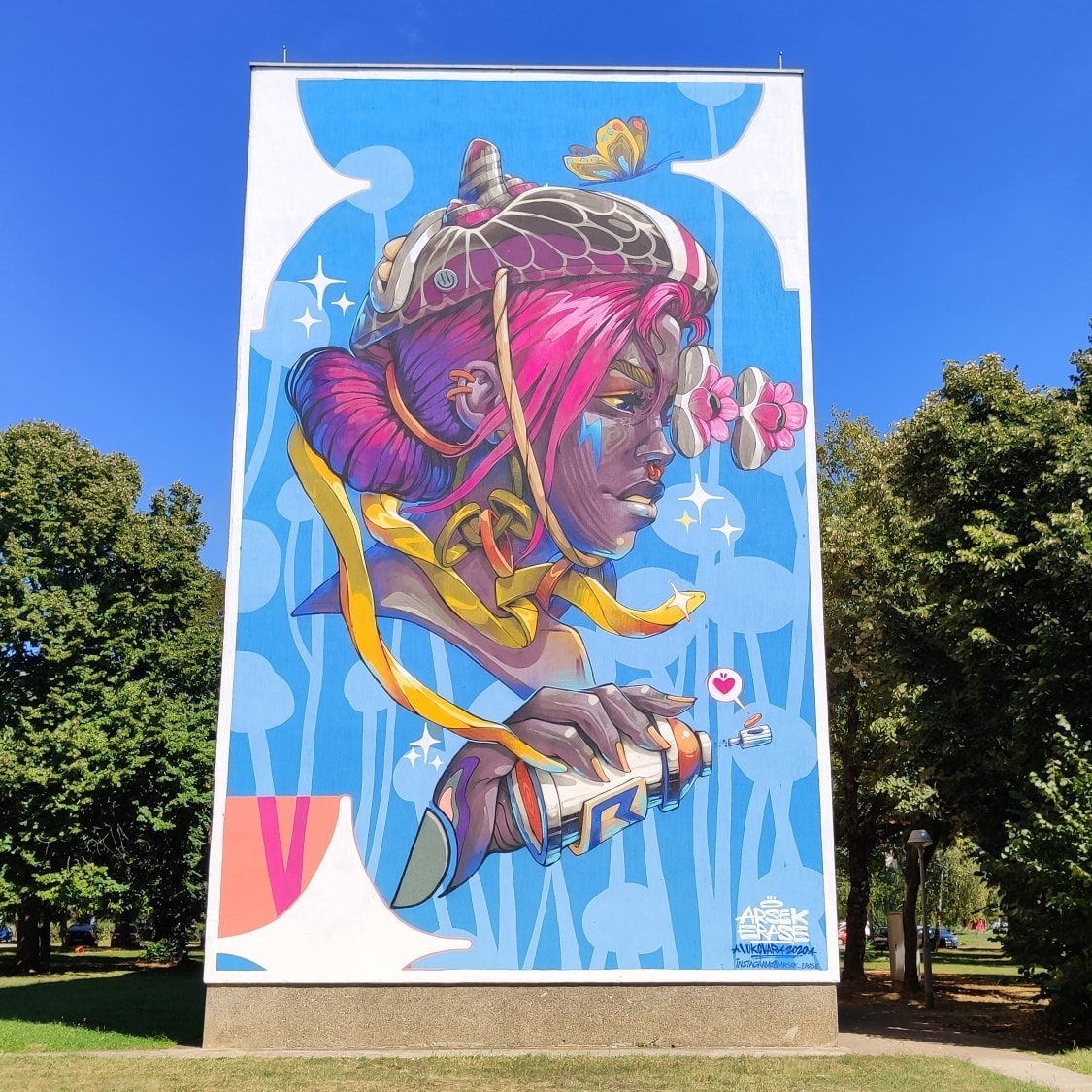
The Golden Snake
Operating as a duo for 20 years, Arsek & Erase create playful, bright and colourful images - and highly memorable characters - using illustration and surrealism. They have painted works all over Europe, their own native Bulgaria, and in Russia, China, Taiwan, El Salvador and the United States.
All photos Vukovar street art 2020 © VukovArt
For the latest travel info, bookmark our main travel info article, which is updated daily.
Read the Croatian Travel Update in your language - now available in 24 languages


